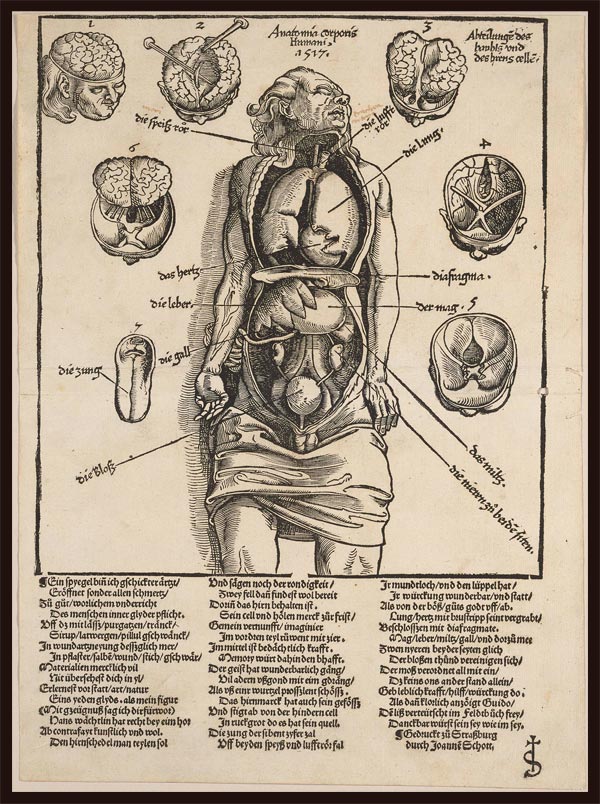Printed using the woodcut technique, this broadside describes a dissection carried out in 1517 by the German physician Wendelin Hock. In an attempt to promote his surgical skills in Strasbourg, Hock staged a public dissection for barbers and surgeons of which this broadside would have been a perfect marketing tool. There are some obvious naturalistic details in the illustration, such as the shadow cast on the left outline of the body, which suggests a light source coming from the right side. Added to the dissection scene are the German names of different organs, along with the representations of six different stages of the dissection of the brain. But despite Hock’s strong desire to sell an accurate anatomical representation, his broadside is not significantly different from medieval drawings. Hock stills shows a multi-lobed liver touching the stomach like an open hand, as it had been described by Mondino.


